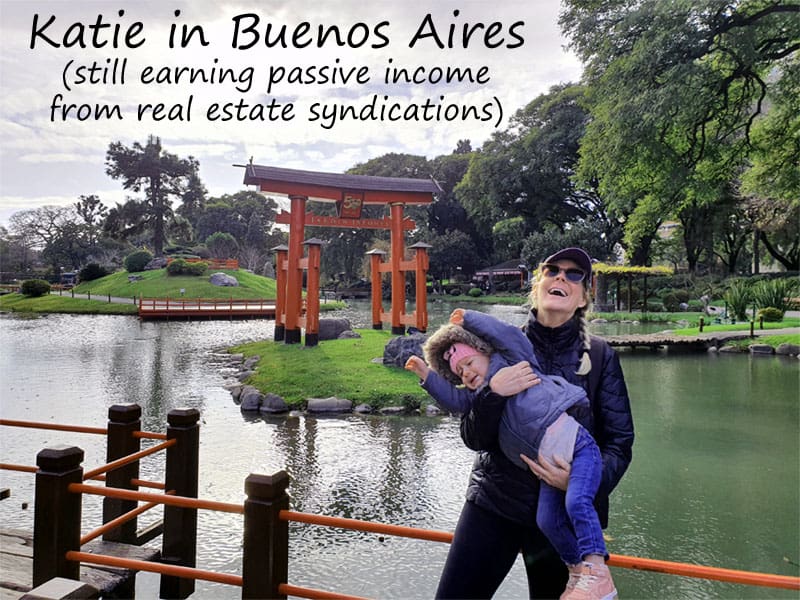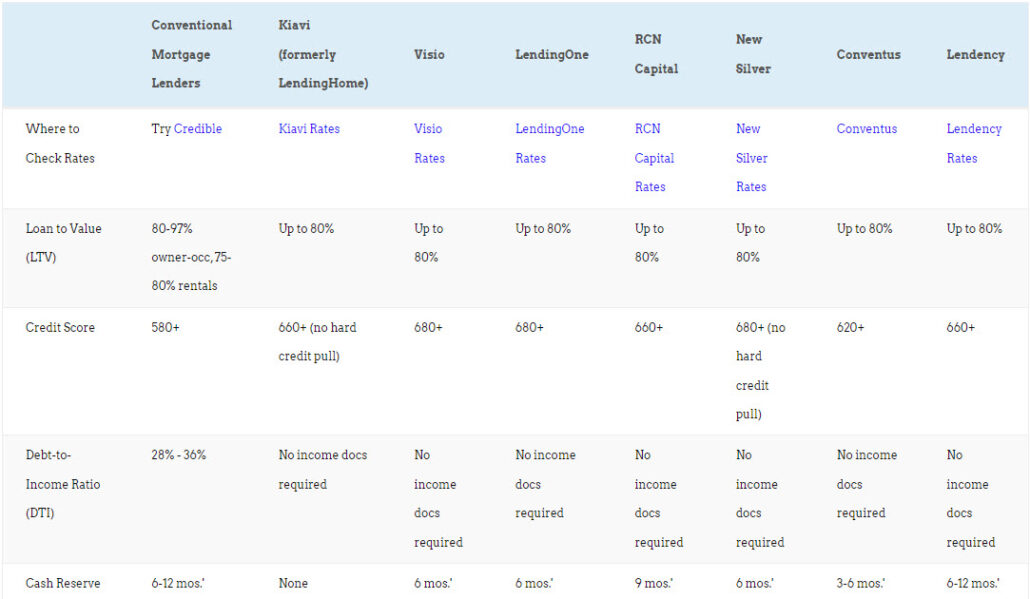One of the great advantages to real estate versus stocks is the predictability of real estate investing returns.
When you buy a rental property, you can accurately predict your average annual yield and cash flow. And while I love stocks too, they’re as volatile as a bipolar teenager with raging hormones.
Still, the risks of real estate investing are real enough in their own right. From bad tenants to bad cash flow to bad contractors, anyone looking to buy rentals needs to plan for – and mitigate – common real estate investing risks.
Here are eleven ways to mitigate the risks of real estate investing, to always come out ahead when buying rental properties.

1. Invest for Cash Flow, Not Appreciation
Far too many investors blindly count on future appreciation in their rental properties.
It’s an easy enough mistake to make. After all, if you look at nationwide real estate trends, home prices usually go up in value. And investors more familiar with stocks can be forgiven for drawing too close an analogy between real estate appreciation with stock price growth. Stock indexes always go up in value in the long term, but the same isn’t necessarily true of home values.
Individual properties, neighborhoods, and towns can all experience drops in home values. Even on a nationwide level, home prices can fall; look no further than the 27.42% drop in the Case-Shiller Home Index during the Great Recession.
Rents prove far more resilient however. Even as home prices were in free fall, rents didn’t dip at all during the Great Recession. Don’t believe me? Check the Census Bureau. Instead, rents simply flattened for a couple years, before steep increases during the 2010s. (The ‘10s? The teens? Someone needs to come up with a decent shorthand for the past decade.)
Where was I? Oh right, investing for cash flow.
Cash flow is predictable. You know the market rent, you know the purchase price and prospective mortgage payment. And you should know your long-term average expenses.
2. Use Conservative Estimates for Expenses
Here’s the most common rookie mistake and real estate investing risk: underestimating expenses.
New investors get starry-eyed when first evaluating rental properties, and they fail to adequately forecast costs like:
-
- Vacancies
- Maintenance
- Repairs
- Property management fees
- Property taxes
- Insurance (both property insurance and rent default insurance)
- Accounting, bookkeeping, travel, and other miscellaneous expenses
A property’s cash flow is not “rent minus the mortgage payment.” It’s rent minus all the expenses above, and then minus the mortgage payment.
Just because vacancies and major repairs don’t happen every month doesn’t mean you can ignore them. They’re irregular but extremely expensive, so you have to take the long-term average cost to account for it in your monthly cash flow. For example, if the property turns over once a year, and sits vacant for one month while you repaint and advertise it for rent, that’s a roughly 8% vacancy rate.
Related Article Read: Ways to find pre foreclosure homes.
Related Article Read: Guide to Driving For Dollars.
Read up on how to accurately forecast rental property returns, and get a sense for how real estate cash flow looks visually. Then, for each prospective rental investment, run the numbers through our free rental cash flow calculator.
As a general rule, non-mortgage expenses come to around 50% of the rent. This rule is creatively known as the “50% Rule.” And creatively named or not, it holds true remarkably often.
Keep in mind that while good deals aren’t just sitting around for you pluck from the Deal Tree, you can always negotiate real estate deals to improve a property’s cash flow. For that matter, you can get more aggressive with finding good deals on real estate, even in hot markets.
3. Avoid Low-End Rentals
Low-end rental properties offer tantalizing returns – on paper. In reality they’re a siren song that draws you in only dash your dreams against the rocks.
I should know. In my early days of real estate investing I bought over a dozen of them, and spent over a decade slowly strangled by tens of thousands of dollars in losses.
 They look good on paper because your cash flow calculations usually don’t account for hidden costs like vandalism, break-ins, professional tenants gaming the system to draw out the eviction process. For that matter, even numbers included in the calculations, such as vacancy rates, maintenance, and property management costs, tend to be wrong because of the high turnover rate and high property damage.
They look good on paper because your cash flow calculations usually don’t account for hidden costs like vandalism, break-ins, professional tenants gaming the system to draw out the eviction process. For that matter, even numbers included in the calculations, such as vacancy rates, maintenance, and property management costs, tend to be wrong because of the high turnover rate and high property damage.
Yes, there’s a niche for buying homes in the hood or becoming a Section 8 landlord. But unless you go to pains to learn that niche by apprenticing under a mentor who specializes in them, avoid low-end rental properties and save yourself a world of pain and unforeseen real estate investing risks.
4. Be Careful of Over-Leveraging
Leverage is one of the great advantages to real estate investing. You can buy assets worth hundreds of thousands of dollars, financed mostly with other people’s money.
And it’s also one of the greatest risks of real estate investing.
While leverage can amplify your real estate investing returns, it can also amplify your losses. All the more reason why you need to accurately calculate each rental property’s cash flow before buying!
We talk about rental property loans and financing all the time here at SparkRental, because we know you probably don’t have $200,000 lying around collecting dust to be invested in real estate. So we break down tricks like the BRRRR method to invest with 100% financing, or clever ways to come up with a down payment for your next rental.
But we also try to make it clear that with more leverage comes more risks in real estate investing. That risk virtually disappears for experienced investors, but new investors need to be extremely careful when they leverage themselves to the hilt buying their first few rental properties.
Never forget it takes cash to invest, not just in real estate but in anything. If you’re light on cash, consider starting with house hacking as a way to both finance most of your first property and live for free to supercharge your savings rate. Play around with our house hacking calculator to get a sense for the numbers, and enjoy rent-free living!
5. Don’t Start with Large-Scale Renovation Projects
When it comes to fixer-uppers, start low and go slow.
Managing renovation projects is a skill in itself. Hiring and managing contractors is among the most difficult tasks that real estate investors face, and that says nothing of permits, inspections, unexpected costs, and other higher real estate investing risks that come with major renovation projects.
One option is avoiding fixer-uppers altogether and buying turnkey rental properties. Beyond being easier in general, it makes it far more practical to buy rental properties long-distance, whether through the traditional MLS, turnkey rental property platforms like Roofstock, or off-market deal databases like Asset Column.
Which is not to say that buying fixer-uppers to flip or follow the BRRRR method is a bad strategy. Using repairs to force equity is incredibly effective – if you know what you’re doing. Toward that end, start with properties needing only minor cosmetic repairs, and gradually start tackling larger and larger renovation projects as you build trust with contractors and comfort in managing them.
6. Tenant-Proof Your Property
Tenants are hell on rental properties.
They bang and scuff the walls, they scratch the hardwood floors, they knock over drinks on the carpet. And that’s the grownups; kids and pets are even harder on properties.
So it’s part of your job as a landlord to protect your property from damage. Which you can do by tenant-proofing your units with these rental property improvements.
Not all tenant-proofing involves physical repairs however. Some of it takes the form of protective legal clauses in your lease agreement, that help you put more legal liability on your tenants and make it easier to deduct from the security deposit.
Tenants are inherent among real estate investing risks, but that doesn’t mean you can’t mitigate those risks with preventative planning.
7. Screen the $%!# Out of Your Tenants
If there’s one risk of real estate investing that landlords always underestimate, it’s the risk of bad tenants.
Bad tenants come in many flavors. You’ve got your “I’ll pay the rent when and if I feel like it” variety, and your “This isn’t my property so I don’t need to take great care of it” types. Then there’s the “This is the perfect property to run my heroin business out of” variation. All will kill your cash flow and profits.
Start with a thorough rental application to collect basic information about your applicants, but don’t stop there. Here’s a quick rundown of additional tenant screening to do with every single applicant.
Credit Reports
An applicant’s income tells you if they can pay, while their credit history tells you if they will pay.
Not everyone wants to admit it, but the fact is that some people have good financial habits and would be mortified to ever pay a bill late. Others never saw a bill they wanted to pay on time.
Run a tenant credit report through our site or one of our competitors, but always run one on every adult 18 and over.
Criminal Reports
Simon might pay all his bills on time, but if he’s an axe murderer, you still have a problem.
And yeah, that’s a bit of a hyperbole. So fine, we’ll get more realistic: do you really want to rent to someone with a history of writing fraudulent checks, or stealing identities, or dealing drugs?
No. You don’t.
Eviction Reports
Oft-overlooked in the tenant screening conversation, eviction reports actually get to the heart of whether an applicant will make a good tenant or not. If they breached another landlord’s lease agreement to the point where they had to file eviction, you better believe there’s a higher risk of them violating your lease too.
In some ways, I consider this tenant screening report even more critical than the other two.
Income
Collect copies of pay stubs, then call the applicant’s boss and verify their employment, income, and likelihood of continued employment.
I even try to ask probing questions about their reliability and character. Do they always show up for work on time? How good of an employee are they? Would you entrust them with your firstborn child?
Well, that last one might be awkward. But you get the idea.
Housing History
Have they paid the rent on time to their current landlord? And because you can only trust the current landlord so far (they might be trying to get rid of them, after all), call their former landlord too. They’ll give it to you straight.
But beyond reliability of rent payments, also look at how often they move. Turnovers are expensive for landlords, and raise your risks of losses from vacancies and future bad tenants, so lower your real estate investing risks by only leasing to tenants who plan to stick around for many years.
Current Home Care & Cleanliness
Some people treat their homes like pigsties. Others are clean and respectful.
There’s only one way to tell the difference: go to their current home and check it out.
8. Use a Hyper-Protective Lease Agreement
I touched on this earlier, so I won’t belabor the point here. But too many landlords blow off their lease agreement (and other leasing documents like disclosures and addenda) as a formality.
It’s not a formality. It’s the shield that guards your property and your profits. And it can either be rusty and full of holes or it can be bulletproof.
For example, does it include a Move-In/Move-Out Statement of Condition form? If so, do you actually use it, walking through the property before the tenants move in, to mark down all pre-existing damage? If not, don’t expect to be able to deduct from the security deposit for damage.
As another example, does your lease agreement include a guest policy clause? If not, what happens when your sweet, innocent tenant starts having her deadbeat, heroin-slinging boyfriend spend five nights a week at the property?
Try out these landlord-protective lease clauses to lower your real estate investing risks and protect your profits.
9. Automate Your Rent Collection
One of the great risks of real estate investing is that your tenants stop paying the rent. When that happens, you get the privilege of paying the mortgage by yourself until you’ve completed the eviction process.
A process which takes many months – I’ve had evictions take eleven months before.
Tenant screening helps, but once you sign a lease agreement, it also helps to automate your rent collection. Set up online rent collection so your tenant can set up automated recurring payments to go out on the first every month. We’re even planning to launch reporting to the credit bureaus, to further incentivize tenants to pay their rent on time.
Finally, we’re working on reopening our complete automation service, where we deduct the tenant’s rent from their paycheck. (We had to temporarily pause it for technical reasons.) It’s a great way to make sure you get paid before the tenant can spend their paycheck on everything other than rent.
10. Insure Against Rent Defaults
The best way to truly protect against this particular real estate investing risk is to literally insure against it.
If your tenant stops paying the rent, the insurance company starts paying it, until you’ve completed the eviction process. Premiums are affordable (usually a few hundred dollars), and you get to sleep at night knowing that even if your excellent tenant loses their job and can’t pay the rent, you’ll still receive rents and it won’t set you back thousands of dollars.
For full rent default insurance details, check out Steady’s program (they’re the only program I know of in the US at the moment).
11. Prioritize Tenant Retention
It’s worth reiterating here: tenant turnovers are expensive.
You often need to repaint, replace the carpets, fix all issues around the property, advertise the unit, show it, run tenant screening reports, do walk-through inspections, sign the lease agreement, mess around with security deposits… it’s where 90% of the work of being landlord lies.
And 90% of real estate investing risks, because if you breeze through the tenant screening process like so many landlords do, you may well end up with a terrible tenant.
So take care of your good tenants. Go out of your way to make sure they know they’re appreciated, even as you conduct your semi-annual inspections and enforce the lease agreement. Use these tricks to retain your good tenants – you’ll simultaneously increase your real estate investing returns, reduce your headaches as a landlord, and lower many of the risks of real estate investing and landlording.
Final Thoughts
If all that sounds like a lot, well, at least you have control over your real estate investing returns, by being able to lower your risks. How much control do you have over your stock returns?
Remember, if you’re not able to accurately predict your rental property returns, you’re doing it wrong. Follow the tactics above to reduce your real estate investing risks, and enjoy ongoing high-yield rental income for years to come.♦
How do you lower your real estate investing risks? What’s worked in the past to boost your real estate investing returns?
Learn More to Earn More
About the Author

G. Brian Davis is a real estate investor and cofounder of SparkRental who spends 10 months of the year in South America. His mission: to help 5,000 people reach financial independence with passive income from real estate. If you want to be one of them, join Brian and Deni for a free class on How to Earn 15-25% on Fractional Real Estate Investments.



























Screening is key, whether a low-income tenant or not. screening is
one of the most important ways to protect your rental, also, protective legal clauses in your lease agreement.
I like the idea of Rent default insurance sounds interesting.
So true Andrea! Tenant screening is one of the most important duties in the landlord job description. And we’re big believers in reducing risk with rent default insurance as well – all comes together to make your rental income predictable and reliable!
As always, great work Brian!! loved this article.
Thanks Dan, much appreciated!